A co-worker mentioned to me a few months ago that one of our internal Delphi applications seems to be taking up 8 GB of RAM. I told him:
That's not possible
A 32-bit application only has a 32-bit virtual address space. Even if there was a memory leak, the most memory it could consume is 2 GB. After that allocations would fail (as there would be no empty space in the virtual address space). And in the case of a memory leak, the virtual pages will be swapped out to the pagefile, freeing up physical RAM.
But he noted that Windows Resource Monitor indicated that less than 1 GB of RAM was available on the system. And while our app was only using 220 MB of virtual memory: closing it freed up 8 GB of physical RAM.
So I tested it
I let the application run for a few weeks, and today I finally decided to test it.
First I look at memory usage before closing the app, using Process Explorer:
- the working set (RAM) is: 241 MB
- total virtual memory used: 409 MB
And I used Resource Monitor to check memory used by the app, and total RAM in use:
- virtual memory allocated by application: 252 MB
- physical memory in use: 14 GB
And then memory usage after closing the app:
- physical memory in use: 6.6 GB (7.4 GB less)
I also used Process Explorer to look at a breakdown of physical RAM use before and after. The only difference is that 8 GB of RAM really was uncommitted and now free:
Item Before After Commit Charge (K) 15,516,388 7,264,420 Physical Memory Available (K) 1,959,480 9,990,012 Zeroed Paging List (K) 539,212 8,556,340
Note: It's somewhat interesting that Windows would waste time instantly zeroing out all the memory, rather than simply putting it on a standby list, and zero it out as needed (as memory requests need to be satisfied).
None of those things explain what the RAM was doing (What are you doing just sitting there! What do you contain!?)
What is in that memory?
That RAM must contain something useful; it must have some purpose. For that I turned to SysInternals' RAMMap. It can break down memory allocations.
The only clue that RAMMap provides is that the 8 GB of physical memory was associated with something called Session Private. These Session Private allocations are not associated with any process (i.e. not my process):
| Item | Before | After |
|---|---|---|
| Session Private | 8,031 MB | 276 MB |
| Unused | 1,111 MB | 8,342 MB |
I'm certainly not doing anything with EMS, XMS, AWE, etc.
What could possibly be happening in a 32-bit non-Administrator application that is causing Windows to allocate an additional 7 GB of RAM?
- It's not a cache of swapped out items
- it's not a SuperFetch cache
It's just there, consuming RAM.
Session Private
The only information about "Session Private" memory is from a blog post announcing RAMMap:
Session Private: Memory that is private to a particular logged in session. This will be higher on RDS Session Host servers.
What kind of app is this?
This is a 32-bit native Windows application (i.e. not Java, not .NET). Because it is a native Windows application it, of course, makes heavy use of the Windows API.
It should be noted that I wasn't asking people to debug the application; I was hoping a Windows developer out there would know why Windows might hold memory that I never allocated. Having said that, the only thing changed recently (in the last 2 or 3 years) that could cause such a thing is the feature that takes a screenshot every 5 minutes and saves it to the user's %LocalAppData% folder. A timer fires every five minutes:
QueueUserWorkItem(TakeScreenshotThreadProc);
And pseudo-code of the thread method:
void TakeScreenshotThreadProc(Pointer data)
{
String szFolder = GetFolderPath(CSIDL_LOCAL_APPDTA);
ForceDirectoryExists(szFolder);
String szFile = szFolder + "\\" + FormatDateTime("yyyyMMdd'_'hhnnss", Now()) + ".jpg";
Image destImage = new Image();
try
{
CaptureDesktop(destImage);
JPEGImage jpg = new JPEGImage();
jpg.CopyFrom(destImage);
jpg.CompressionQuality = 13;
jpg.Compress();
HANDLE hFile = CreateFile(szFile, GENERIC_WRITE,
FILE_SHARE_READ | FILE_SHARE_WRITE, null, CREATE_ALWAYS,
FILE_ATTRIBUTE_ARCHIVE | FILE_ATTRIBUTE_ENCRYPTED, 0);
//error checking elucidated
try
{
Stream stm = new HandleStream(hFile);
try
{
jpg.SaveToStream(stm);
}
finally
{
stm.Free();
}
}
finally
{
CloseHandle(hFile);
}
}
finally
{
destImage.Free();
}
}

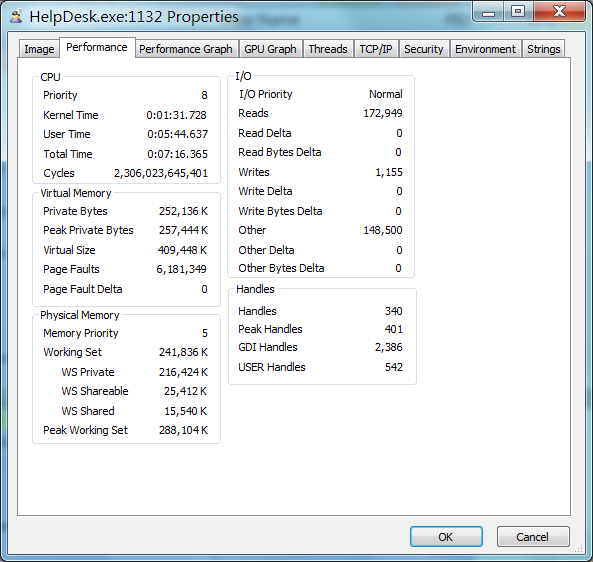
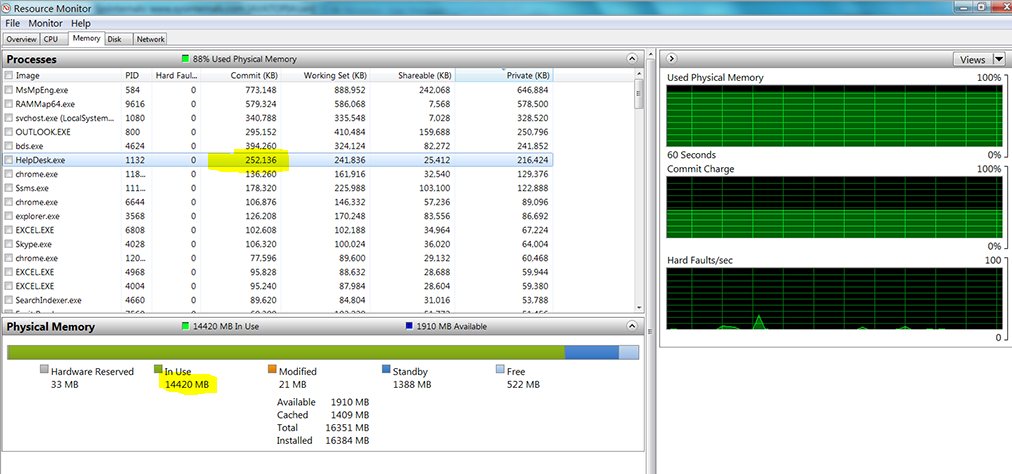
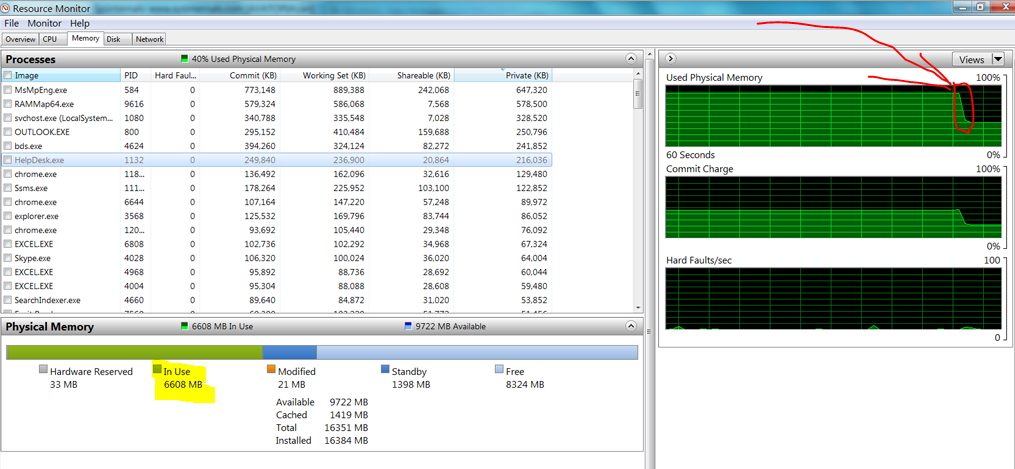
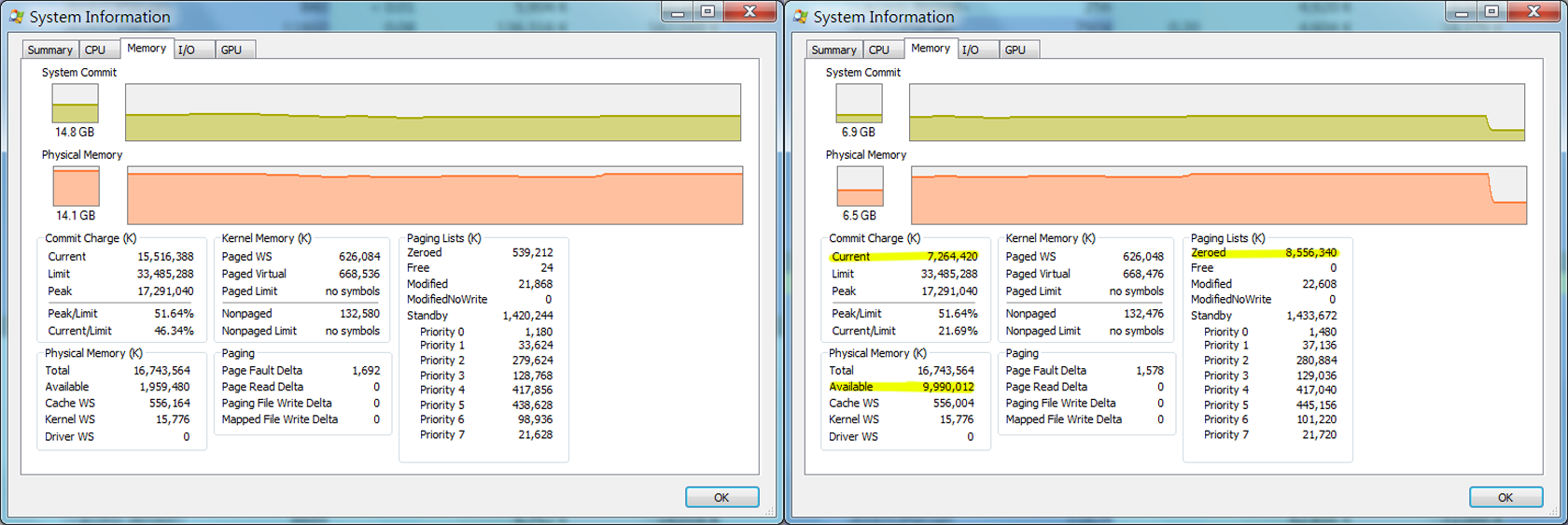
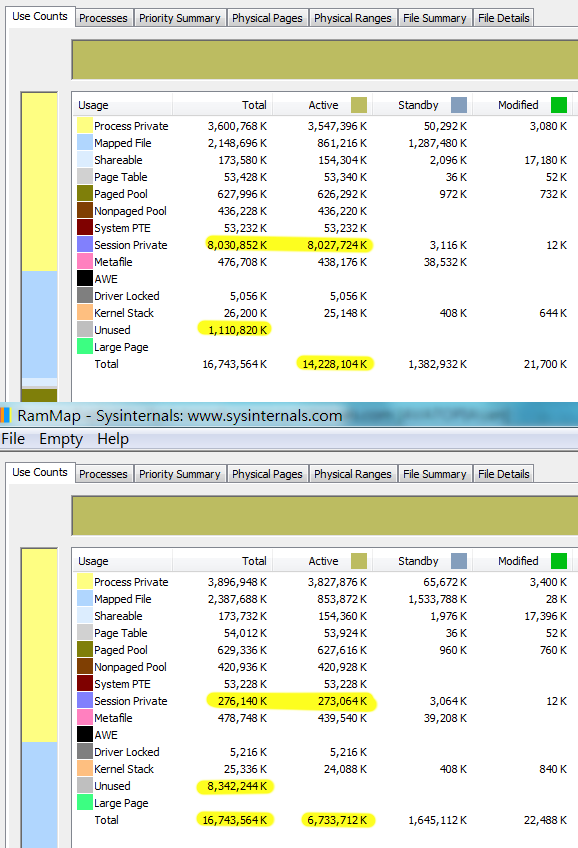


for i := 1 to 1000000 do FindFirst('c:\*', faAnyFile, sr);After this loop: app 133M, total 3GB, afle closing app: total 1.5 GB – BambiJPEGImage... – Lilialiliaceous